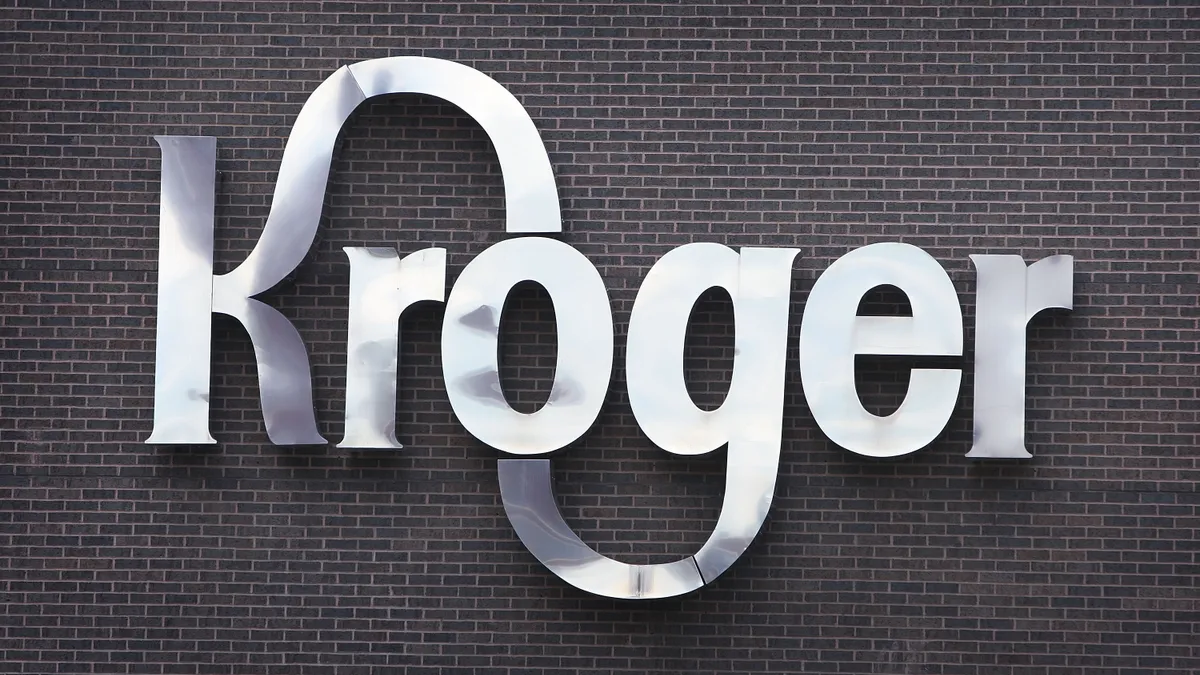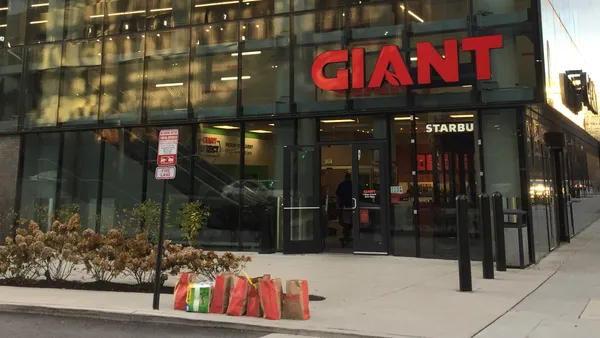NEW YORK — Retail media generated a lot of buzz at Advertising Week New York, reflecting its status as a growth driver in an otherwise cooling ad market. While the category has drawn a deluge of new entrants, Kroger has been operating a network since 2017, a degree of maturity that led to it recently expanding into other emergent channels.
The country’s largest grocer in September added connected TV and video inventory to its private programmatic marketplace, another step beyond the display and sponsored product listings that make up a sizable chunk of retail media activity. The latest addition to the program includes ad-tech partnerships with Magnite, OpenX, PubMatic and Xandr to help advertisers better target their messages. Kroger’s retail media business is part of the Kroger Precision Marketing (KPM) arm and is powered by shopper data derived from a loyalty program that claims to capture 96% of transactions.
“There are multiple channels and the channels need to be leveraged for the right time,” said Cara Pratt, senior vice president of Kroger Precision Marketing at 84.51°, about the CTV push. “Working through the sequencing of an effective investment strategy is really important.”

As KPM broadens its purview, it’s set for an even bigger shakeup. Days before the show, Kroger announced it would merge with rival Albertsons, a self-admitted “late mover” in retail media but one with a vocal presence at Advertising Week. Pratt declined to discuss the deal beyond pointing to a press release but spoke about KPM’s CTV ambitions and how the landscape is changing (also a topic on a panel she led later in the day).
The interview has been edited for clarity and brevity.
MARKETING DIVE: When we first met last year, Kroger was launching a private programmatic marketplace. This year, you've got a big theme around CTV. Why is that a channel that's come into focus?
CARA PRATT: When we made the announcement last year for the private marketplace, it was wave one, with programmatic display the first wave.
A lot of the work that we've been doing over the last several months has been tethered into ensuring that we have the right integrations with the SSPs. The inventory side of things is critical with the announcements we’ve made, with Magnite being a primary one. That extends on top of OpenX and PubMatic and some other core players as well.
Obviously, we've been watching CTV viewership trends for some time. Nielsen officially announced that streaming surpassed cable for the first time ever in July. Really, it's around making sure that we're creating the right access to where consumers are consuming content. It's a step in the journey.
A topic of discussion on your panel is addressability. CTV has seen increasing consumer adoption, increasing brand investment, but there are still gaps. What about Kroger's data gets over the gap?
PRATT: We've got access to the right inventory and brands because their traders can have hands on the keys. They can put their own brand safety standards on top of that. It's creating an environment where we've identified who are the right households to expose and what's going to drive the highest business impact.
A lot of the conversations we have with brands and agency partners are also around the ultimate objectives they have. There are brands that are leveraging a real pinpointed activation opportunity for a re-engagement plan for lapsed buyers. There are brands that are really looking to drive net incremental shoppers from a household penetration gains perspective. Being able to slice and dice the cohorts of consumers that you want to expose content to or different creative to is really critical. That's why the connection back into their own tech stack and their own safety standards is a really important piece.
Then, there’s living up to the measurement standards. It's a real challenge in the industry right now with the lack of standards that exist. We want to continue to put focus on standards that get into business outcomes versus standards that get into media consumption. Moving beyond viewable CPMs and click-through rates and those types as an engagement proxy to an actual business outcome. There are a lot of ways to augment what has historically been a common view of performance that has never really gotten into the heart of what performance really means.
If you could have a solution tomorrow to enhance the CTV side of the business, what would you want?
PRATT: The operational side of influencing media at scale is really front of mind for us. What does sustainability in media really look like? Supply path optimization is going to be an interesting set of innovation and technology accelerations that are going to create a meaningful opportunity for operators that are fueling media investment activation to optimize at scale in different ways than we've optimized for to date. We're excited about the continued evolution of the landscape.
Kroger has been in the retail media game a lot longer than other retailers. It is now this huge investment channel across the board. Is CTV the next big competitive battleground?
PRATT: There's no doubt that mature retail media businesses that have the right scale in addressability and in their data foundation can impact advertisers well beyond owned and operated properties. It is making sure that we bring a more performant media ecosystem in the off-property space as well and make those publisher assets work harder. That's where CTV is going to be a big play as investment starts to evolve between linear and streaming. Social commerce is going to be a really fast-moving place because of consumer adoption and the ability to inspire and connect that inspiration. You can go from awareness to conversion in an instant.
Those are the spaces that we think are gonna be really strong engines to the future. That retail media, again, for those that have the right scale and rigor and appropriate practices at play, are going to be able to influence productively.
Social and streaming commerce are interesting. It seemed like they were set for a bigger moment earlier in the pandemic, and then some platforms pulled back their investments. Are you generally optimistic?
I'm an optimist for it, not necessarily for Kroger to be a publisher at scale on the social commerce side, but really about enabling core social commerce platforms to be able to inspire, engage and convert in a frictionless way.
Anything else you'd highlight?
PRATT: The one thing that I'm hearing and seeing, not just here at this conference but that has been happening for the last nine to 12 months, is this attention measure. That's something that I have a level of curiosity around as we think about the future of media, measurement practices and making sure that there’s discipline, from an industry perspective, around what we're solving for.
The industry doesn't need another vanity metric. That's a pseudo-lens into whether an ad had a degree of influence into changing behavior. It really is about continuing to drive that rigor and focusing on brand outcomes. There's a great degree of intrigue and then inconsistency in understanding the role that, potentially, this new measure could bring forward.











